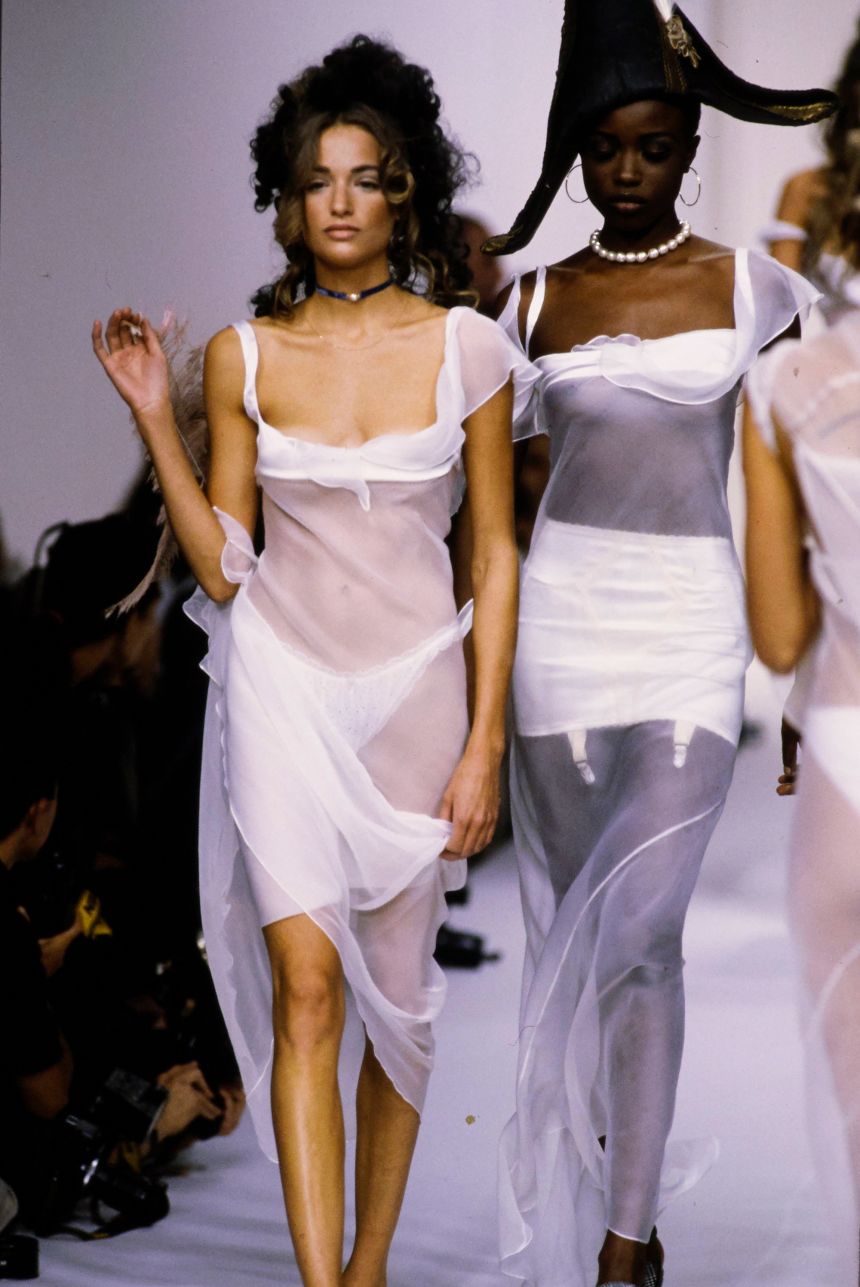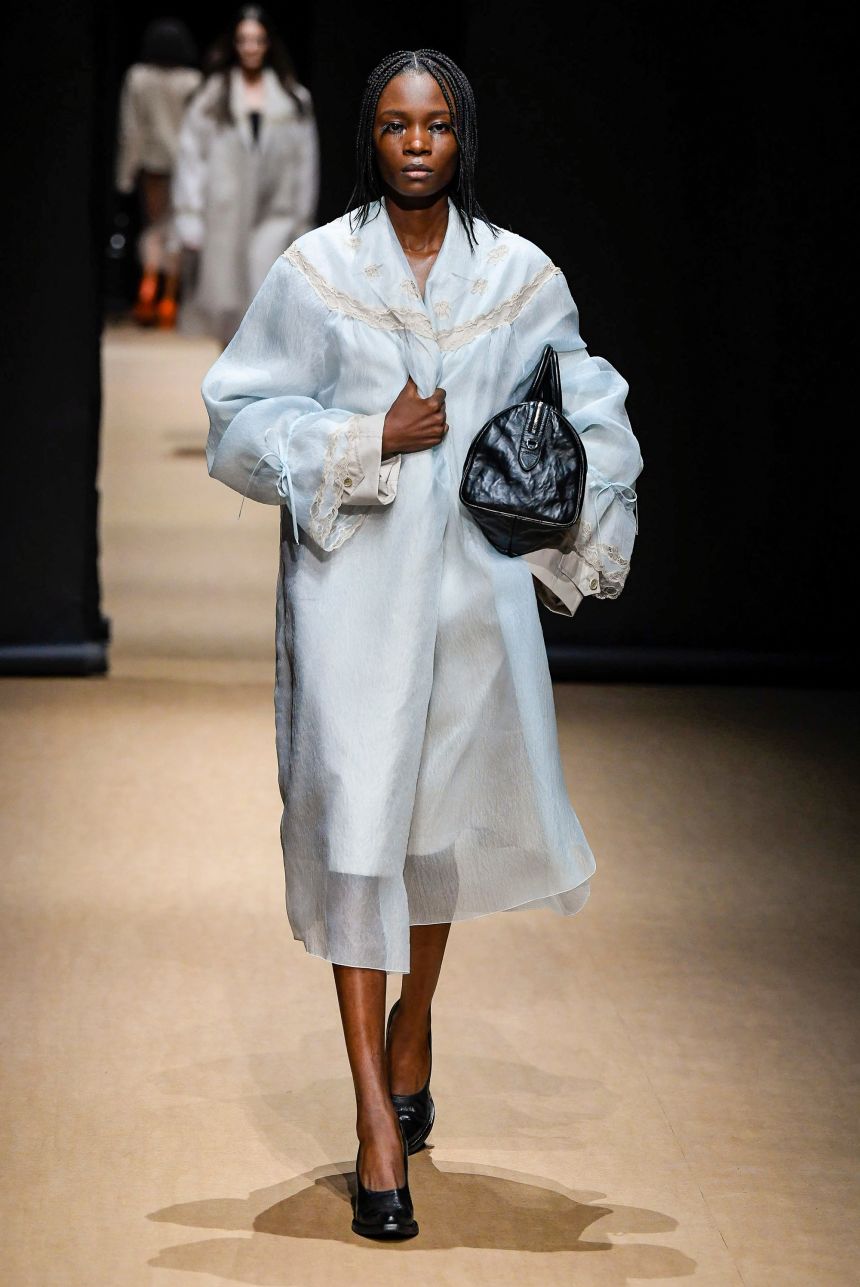This is not your grandmother’s nightgown. Or maybe it is. The same style of sleepwear that was once strictly relegated to bedrooms and boudoirs has now become the summer dress of the year.
Reformation’s Holly Sleep Dress ($128), a floaty mini dress with a scrunched 1950s-style neckline with scalloped edges, was inspired by “vintage nightgowns that you can probably get away with wearing out and about,” the brand’s website read. Similarly, fellow cool-girl label Damson Madder noted that its Elspeth Nightdress ($67), which features dainty floral embroidery and a broderie hemline, is “effortlessly wearable from night to day.” Meanwhile, If Only If — the British brand behind the scene-stealing nightgowns worn by Megan Stalter in Lena Dunham’s Netflix series “Too Much” — photographs models wearing their nighties with woven basket bags at the farmer’s market or out in the countryside.
On TikTok, videos made using the hashtag #nightgown have increased 200% in the last 12 months. Content creators on Instagram are showing equal enthusiasm. “I literally cannot stop buying vintage nightgowns,” influencer Bridget Brown told her 99,000 Instagram followers in a recent video,as she unboxed an embroidered, scoop-neck cotton nightie that flowed past her knees, bought secondhand from Facebook Marketplace. “This is sexy for an Edwardian nightgown, let me tell you,” she added, her mouth agape with glee.
But braving the outside world in your intimates is not an entirely new concept. In the late 18th century, French artist Elizabeth Louise Vigée Le Brun painted a portrait of Marie Antoinette, the last queen of France, wearing a sloping straw hat and chemise dress — a typical undergarment for women at the time. The picture was initially displayed at Vigée Le Brun’s first-ever exhibition at the prestigious Académie Royale de Peinture et de Sculpture in 1783, though the exposing nature of the queen’s nightie was deemed too inappropriate for public viewership and quickly removed.

For years, designers have tried to harness that same feeling of shock, exposure and titillation by reimagining lingerie staples such as corsets, bras and nightdresses on the runway. For his Spring-Summer 1992 show in London, John Galliano honed in on the romanticism and sensuality of 19th-century slips typically worn in the French court. Named “Napoleon and Josephine,” Galliano’s collection included sheer nightdresses that revealed the bust entirely. At Calvin Klein’s Spring-Summer 1995 show in New York, silky lace-trimmed nightgowns in black, stone grey and champagne hung off the frames of models like Kate Moss and Stella Tennant. If Galliano’s collection was about capturing a theatrical sleepwear fantasy, Klein offered a version of nightgowns that were surprisingly sophisticated and even, at times, office appropriate. In 1997, Stella McCartney’s debut as the designer of Chloé added to the conversation even further: With delicate spaghetti straps and pastel colors, the nightgowns that appeared on the runway were perhaps the most faithful to what could have really been worn to bed.
The tide has well and truly changed since the days of Marie Antoinette’s portrait — even Princess Diana wore an inky blue and black lace-trimmed slip dress from Dior to the 1996 Met Gala. But where nightgowns have previously been used as a visual shorthand for sex appeal, with their skin-baring cuts and silky fabric, today’s trend is driven by frumpier, more historically-accurate silhouettes.
Rachel Tashjian, fashion critic at the Washington Post, who also writes an invite-only newsletter called “Opulent Tips,” has a cotton nightgown from the late 1800s she likes to wear while walking her dog in New York’s Central Park on the weekends. “The fabric is quite starchy, and it almost reminds me of wedding cake frosting,” she said over the phone. It once belonged, she thinks, to her husband’s great grandmother. “Pieces from that time, especially underpinnings, have all these incredible details of lacework and pin tucks and pleating,” she added.
Sandeep Salter, the co-founder of the New York-based clothing and homeware brand Salter House, says that organic cotton nightdresses and PJs are her most popular categories. “New Yorkers know us for it and we continue to launch new designs periodically,” she wrote in an email. The frocks are inspired by a range of references — from the nightgowns first received by Salter from her mother when she was 13 years old to the original nightdress worn by Wendy Darling in “Peter Pan.” One of Salter’s designs, an oversized square-neck white cotton frock called “The Lamb”, was modelled after traditional 19th century French undergarments. “We see our nightdresses styled into daywear in really nice ways,” Salter said. “With a cardigan tied like a sash around the body, with a mini-heeled Mary Jane or ballet flats and a sharp purse.” She herself likes to pair a Salter nightgown with an oversized scrunchie and a baseball cap.
No matter how it’s worn, the common thread between these romantic, loose-fitting gowns is comfort. It’s a hangover, perhaps, from the pandemic-induced lockdowns of 2020, when people were mandated to stay home and sales of sweatpants surged (even Anna Wintour succumbed to their siren call). Two years later, when restrictions lifted post-pandemic, we slipped back into our jeans and slacks — but the hankering for comfort never left. “It feels good, physically,” Salter said about the continued interest in gauzy gowns. Tashjian agreed, noting that nightdresses offer a more put-together alternative to baggy sweatpants.

The enduring popularity of nightwear styles isn’t only being driven by women, either. At Milan’s Men’s Fashion Week in June, Dolce & Gabbana showed loungewear, slouchy separates and matching striped trousers and shirts that riffed off pajama sets.
Do recent fashion trends such as these have anything to do with a revival of conservative politics? “I think a lot of this comes down to how the person is wearing it,” said Tashjian. “There also is a world in which it’s some conflation of this conservative, ‘trad wife’ style,” she said, referring to the rising trend of milkmaid dresses, full A-line skirts and puff-sleeve blouses. But many other young women are winking at this type of antiquated femininity while engaging with it. Take Prada’s Spring-Summer 2023 show, where sheer, matronly nightdresses and housecoats were shown with heeled Mary Janes and tightly gripped clutch bags. “It’s a woman taking things that are assigned to a particular lane in life, and recontextualizing them in a way that’s very naughty or mischievous or arrogant,” observed Tashjian.




